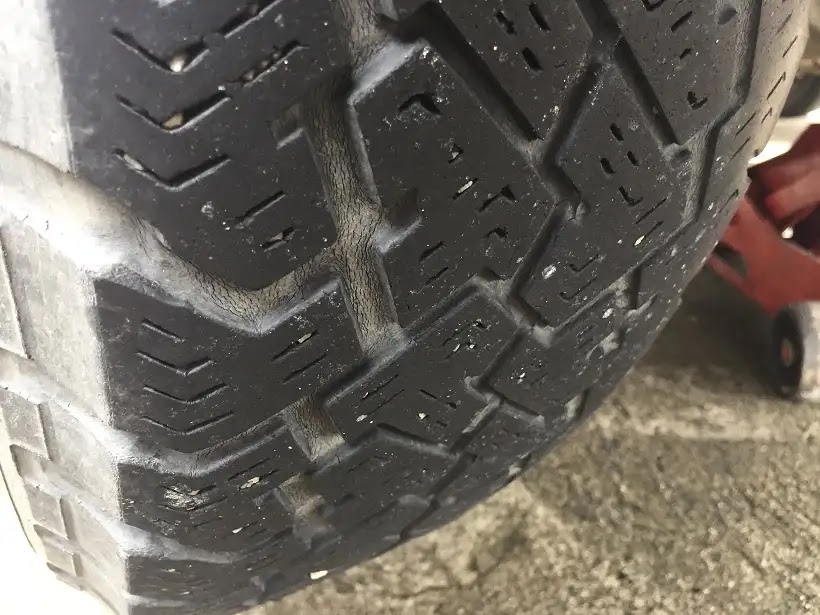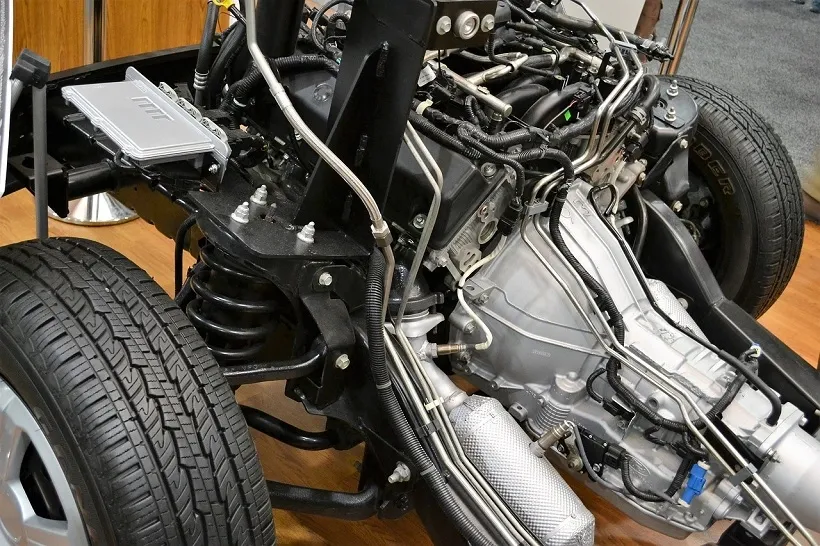A car overheating is a common issue that can cause significant damage if not addressed quickly. When your engine's temperature exceeds normal operating levels, it can result in severe mechanical failure, leaving you stranded. Understanding the causes behind overheating is essential for preventing costly repairs and ensuring your vehicle remains in optimal condition. In this article, we will delve into the various factors that lead to engine overheating, how to prevent it, and the steps to take when you encounter this problem.
👉Understanding the Cooling System
Before diving into the causes of car overheating, it is important to understand how a vehicle's cooling system works. The cooling system plays a crucial role in regulating engine temperature by circulating coolant (a mixture of water and antifreeze) through the engine block and radiator. The system includes the following key components:
1. Radiator: The radiator transfers heat from the coolant to the outside air. It is equipped with a fan to improve airflow and cooling efficiency.
2. Water Pump: This pump circulates the coolant through the engine and the radiator to maintain a steady flow of coolant.
3. Thermostat: The thermostat controls the flow of coolant to the radiator by opening and closing based on the engine temperature.
4. Cooling Fans: These fans blow air over the radiator to help cool the coolant when the vehicle is stationary or moving slowly.
5. Hoses: These carry coolant between the engine and the radiator.
When any of these components malfunction or fail, it can lead to the engine overheating.
👉Common Causes of Car Overheating
Overheating occurs for several reasons, most of which stem from the failure of the cooling system components mentioned above. Let’s explore some of the most common causes of a car overheating.
1. Low Coolant LevelsOne of the leading causes of car overheating is low coolant levels. Coolant plays a vital role in absorbing heat from the engine and dissipating it through the radiator. When the coolant level is too low, the system cannot effectively remove heat from the engine, causing it to overheat.
Common reasons for low coolant levels:• Coolant leaks in the hoses, radiator, or water pump
• A loose radiator cap, which can cause coolant to evaporate
• Faulty radiator hoses that crack or burst
• Cracks in the engine block or cylinder head
2. Malfunctioning Thermostat
The thermostat is a small yet essential part of the cooling system. It regulates the flow of coolant by opening when the engine reaches a certain temperature and allowing the coolant to pass through to the radiator. If the thermostat is stuck in the closed position, the coolant cannot circulate properly, leading to rapid engine overheating.
3. Failed Water PumpThe water pump is responsible for circulating the coolant throughout the cooling system. A failed or malfunctioning water pump will disrupt this circulation, causing the engine to overheat quickly. Water pump failure can be due to worn bearings, broken impellers, or a faulty pulley. If you hear a grinding noise from the engine or notice coolant leaks near the front of the vehicle, it may be a sign that the water pump is failing.
4. Clogged RadiatorOver time, dirt, debris, and rust can build up inside the radiator, reducing its ability to efficiently transfer heat from the coolant to the outside air. A clogged radiator will not cool the engine as effectively, causing the engine temperature to rise. Regular radiator flushes can help prevent this issue, but if it’s severely clogged, it may need to be replaced.
5. Broken Radiator FanRadiator fans are designed to pull air through the radiator to cool the coolant when the car is stationary or moving at slow speeds. If the radiator fan fails or the fan motor malfunctions, the coolant will not cool down properly, resulting in overheating, particularly when idling or driving in heavy traffic.
6. Leaking RadiatorA leaking radiator can cause the coolant to escape, leading to low coolant levels and, ultimately, engine overheating. Common causes of radiator leaks include corrosion, cracked hoses, or damage to the radiator itself. Regular inspections can help identify leaks before they lead to major issues.
7. Coolant Hose FailureCoolant hoses are responsible for carrying coolant between the radiator, engine, and other components. Over time, these hoses can become worn, brittle, or cracked, leading to leaks. When a hose fails, the cooling system cannot function properly, and the engine may overheat. It’s essential to inspect coolant hoses regularly and replace them if they show signs of wear.
8. Faulty Radiator CapThe radiator cap plays an important role in maintaining the pressure inside the cooling system. If the cap is faulty or does not seal properly, it can cause coolant to boil or leak, reducing the system's efficiency and causing the engine to overheat. A damaged or worn-out radiator cap should be replaced to prevent this issue.
9. Blocked Coolant PassagesOver time, sediment, rust, and mineral deposits can build up in the coolant passages inside the engine. These blockages reduce the coolant's ability to flow efficiently through the system, leading to hot spots in the engine and eventual overheating. Flushing the cooling system regularly helps prevent the formation of these deposits.
10. Blown Head GasketThe head gasket seals the cylinder head to the engine block, ensuring that coolant and oil remain separated. If the head gasket blows, coolant can mix with oil or leak into the combustion chambers, causing the engine to overheat. A blown head gasket is a serious issue and often results in costly repairs, as it can lead to engine damage if not addressed promptly.
11. Low Engine OilEngine oil plays a crucial role in lubricating the engine’s moving parts and helping to dissipate heat. If your engine oil is low or the oil has become degraded, it cannot perform this function effectively, causing the engine to run hotter than usual. Always check your engine oil levels regularly and ensure you’re using the recommended oil grade for your vehicle.
12. Driving in Extreme ConditionsDriving in extremely hot weather or towing heavy loads can cause additional strain on your vehicle’s engine and cooling system. In these conditions, the engine works harder, producing more heat. If the cooling system is not functioning at peak efficiency, the engine may overheat. It’s essential to ensure your vehicle’s cooling system is in good condition when driving in extreme conditions.
👉Signs Your Car is Overheating
Recognizing the signs of an overheating engine is critical to preventing further damage. Here are some common symptoms that indicate your car may be overheating:
• Temperature Gauge in the Red: Most vehicles have a temperature gauge on the dashboard. If the needle moves into the red zone, it’s a clear indication that your engine is running too hot.
• Steam or Smoke from the Engine: Seeing steam or smoke coming from under the hood is a strong sign that your engine is overheating. This often occurs when the coolant boils or leaks onto hot engine parts.
• Strange Smells: Overheating can cause various smells, such as a sweet smell from boiling coolant or a burning smell from oil or other engine components.
• Loss of Power: An overheating engine may lose power or enter "limp mode" to prevent further damage. If you notice a sudden drop in performance, it could be due to high engine temperatures.
• Warning Lights: Modern vehicles are equipped with warning lights for engine temperature. If the temperature warning light comes on, it’s a sign that the engine is overheating.
👉What to Do When Your Car Overheats
If you notice any signs of your engine overheating, it’s essential to take action immediately to avoid damaging your vehicle. Here’s what you should do if your car starts to overheat:
1. Turn Off the Air Conditioning: Running the air conditioning can add extra strain to your engine. Turning it off will reduce the load on the engine and help lower the temperature.
2. Turn On the Heater: This may sound counterintuitive, but turning on the heater can help draw heat away from the engine and into the cabin.
3. Pull Over Safely: If the temperature continues to rise, pull over to a safe location and turn off the engine. Allow the engine to cool for at least 30 minutes before opening the hood.
4. Check Coolant Levels: Once the engine has cooled, check the coolant level. If it’s low, you may be able to add more coolant to get back on the road, but this is a temporary solution. Never open the radiator cap when the engine is hot, as the pressurized coolant can cause serious burns.
5. Call for Assistance: If the problem persists, it’s best to call for roadside assistance or have your vehicle towed to a mechanic for further inspection.
👉How to Prevent Your Car from Overheating
Preventing your car from overheating involves regular maintenance and vigilance. Here are some tips to help you avoid this common issue:
• Check Coolant Levels: Regularly check the coolant level in the reservoir and top it off if needed. Make sure to use the correct coolant type for your vehicle.
• Inspect the Cooling System: Periodically inspect the radiator, water pump, thermostat, hoses, and radiator cap for any signs of wear, leaks, or damage.
• Perform Routine Radiator Flushes: Flushing the radiator every 30,000 to 50,000 miles helps remove dirt, debris, and rust that can clog the system.
• Monitor Engine Oil: Ensure that your engine oil is always at the proper level and change it according to the manufacturer’s recommendations.
• Drive Smart: Avoid pushing your engine too hard in extreme conditions, such as towing heavy loads or driving in very hot weather.
💬Final ThoughtsOverheating is a serious issue that can lead to expensive repairs and even engine failure if not addressed promptly. By understanding the causes of overheating, recognizing the signs early, and taking preventive measures, you can keep your vehicle running smoothly and avoid the inconvenience of an overheated engine. Regular maintenance of your car's cooling system is key to preventing overheating, ensuring your engine remains at a safe temperature, and extending the life of your vehicle.
Want more videos Cartech?
Subscribe to our YouTube channel👉All About Auto
























